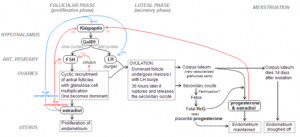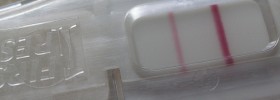 Ovulation, when the female ovary releases an egg, is the time in the menstrual cycle when the woman is fertile. Knowing how to detect ovulation is crucial for women who are hoping to become pregnant or track their fertility as a natural means of avoiding pregnancy.
Ovulation, when the female ovary releases an egg, is the time in the menstrual cycle when the woman is fertile. Knowing how to detect ovulation is crucial for women who are hoping to become pregnant or track their fertility as a natural means of avoiding pregnancy.
Many of these women invest in ovulation predictors to determine their most fertile times and either use that time to attempt conception or to avoid it. However, having a clearer understanding of how the female body works is far more valuable than relying on a simple test.
Detecting Ovulation
Nearly all animals give off signs when they are fertile. The human female is no exception. However, when a human woman ovulates the signs are primarily known only to her. Therefore, ovulation in humans is known as “concealed ovulation.”
Women who chart their fertility as a part of natural family planning are often very aware of when they ovulate. This is the one time during the month when the female can become pregnant.
When a woman is about to become pregnant her basal temperature rises slightly. Cervical mucous also changes. During a woman’s most fertile time of the month cervical mucous becomes sticky, then slippery and thin. It increases in amount during this time. The purpose of the change in mucous is to make the uterus a more hospitable host for sperm. During times of infertility there is little mucous. The area is mostly dry and the cervix even works against sperm by blocking the entrance to the womb. However, during times of high fertility, the mucous helps lubricate the way for sperm to enter the uterus. It also helps to keep sperm alive, making it possible for sperm to survive up to five days in the human body.
Taking Control of Your Fertility
The length of the menstrual cycle varies from woman to woman. Though most women have a 28 day cycle, others have a much longer or shorter cycle. After tracking fertility signs and ovulation for several months, nearly every woman will find that her body follows a predictable pattern. Since a woman can not get pregnant when she is not ovulating, knowing this information makes it easy to control fertility naturally. This information can be valuable to the woman who hopes to prevent pregnancy through non-hormonal means, as well as those who are hoping to conceive.







Connect